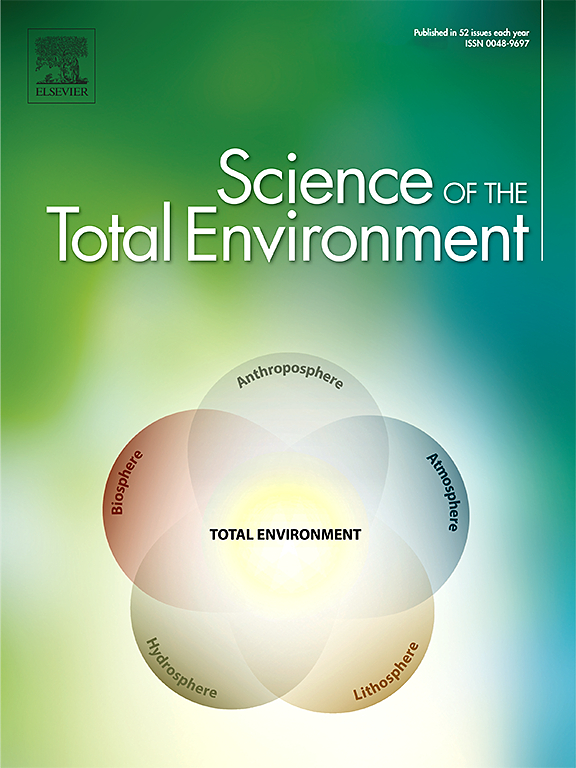Sustained nutrient removal in constructed wetlands using Equisetum giganteum
IF 8.2
1区 环境科学与生态学
Q1 ENVIRONMENTAL SCIENCES
引用次数: 0
Abstract
Constructed wetlands are a cost-effective, nature-based solution for water pollution control, offering ecological and socioeconomic benefits as a sustainable alternative for secondary and tertiary wastewater treatment. While some Equisetum species act as “nutrient pumps” by removing soil nutrients, research on their use in wastewater treatment remains limited.
The aim of this study was to measure the nutrient removal efficiency (N and P) from secondary wastewater comparing two helophytes commonly used in wastewater treatment (Phragmites australis, Typha latifolia) to Equisetum giganteum. A two-year experiment was conducted in outdoor mesocosms, comparing the removal of nutrients from wastewater in these species of plants to control mesocosms with sand.
E. giganteum demonstrated consistently high nutrient removal rates throughout the experiment, outperforming all other plant candidates. It removed 76.88 % of total phosphorus and 74.18 % of soluble reactive phosphorus, maintaining over 50 % removal for most of the studied period. Its total phosphorus removal mass rate was significantly higher than that of other species. Similarly, total nitrogen removal was nearly 13 times higher than controls, with an average removal of 57.7 %, remaining positive even during cold seasons. Ammonia nitrogen was almost completely removed, and while nitrates increased, E. giganteum still removed nearly twice as much N-NO3− as the other treatments.
This study highlights E. giganteum-constructed wetlands as highly efficient for tertiary wastewater treatment, removing significant P and N percentages over extended periods in outdoor conditions. E. giganteum's nutrient absorption provides an eco-friendly solution for nutrient removal and recovery, aligning with green and sustainable wastewater treatment principles.

利用木贼草对人工湿地的持续养分去除
人工湿地是一种成本效益高、以自然为基础的水污染控制解决方案,作为二级和三级废水处理的可持续替代方案,具有生态和社会经济效益。虽然一些木贼属植物通过去除土壤养分起到“养分泵”的作用,但它们在废水处理中的应用研究仍然有限。本研究的目的是比较污水处理中常用的两种水生植物芦苇(Phragmites australis)、风叶(Typha latifolia)和木贼草(Equisetum giganteum)对二次废水中营养物质(N和P)的去除效率。在室外中生态系统中进行了为期两年的实验,比较了这些植物对废水中营养物质的去除效果。在整个实验过程中,Giganteum表现出一贯的高营养去除率,优于所有其他候选植物。它对总磷的去除率为76.88%,对可溶性活性磷的去除率为74.18%,在研究的大部分时间内,去除率保持在50%以上。其总磷去除率显著高于其他菌种。同样,总氮去除率比对照组高出近13倍,平均去除率为57.7%,即使在寒冷季节也保持正值。氨氮几乎被完全去除,虽然硝酸盐含量增加,但巨乳杆菌对N-NO3−的去除率仍是其他处理的近两倍。这项研究强调了E. giganteum-人工湿地对于三级废水处理非常有效,在室外条件下长时间去除显著的P和N百分比。E. giganteum的营养吸收为营养去除和回收提供了环保的解决方案,符合绿色和可持续的废水处理原则。
本文章由计算机程序翻译,如有差异,请以英文原文为准。
求助全文
约1分钟内获得全文
求助全文
来源期刊

Science of the Total Environment
环境科学-环境科学
CiteScore
17.60
自引率
10.20%
发文量
8726
审稿时长
2.4 months
期刊介绍:
The Science of the Total Environment is an international journal dedicated to scientific research on the environment and its interaction with humanity. It covers a wide range of disciplines and seeks to publish innovative, hypothesis-driven, and impactful research that explores the entire environment, including the atmosphere, lithosphere, hydrosphere, biosphere, and anthroposphere.
The journal's updated Aims & Scope emphasizes the importance of interdisciplinary environmental research with broad impact. Priority is given to studies that advance fundamental understanding and explore the interconnectedness of multiple environmental spheres. Field studies are preferred, while laboratory experiments must demonstrate significant methodological advancements or mechanistic insights with direct relevance to the environment.
 求助内容:
求助内容: 应助结果提醒方式:
应助结果提醒方式:


